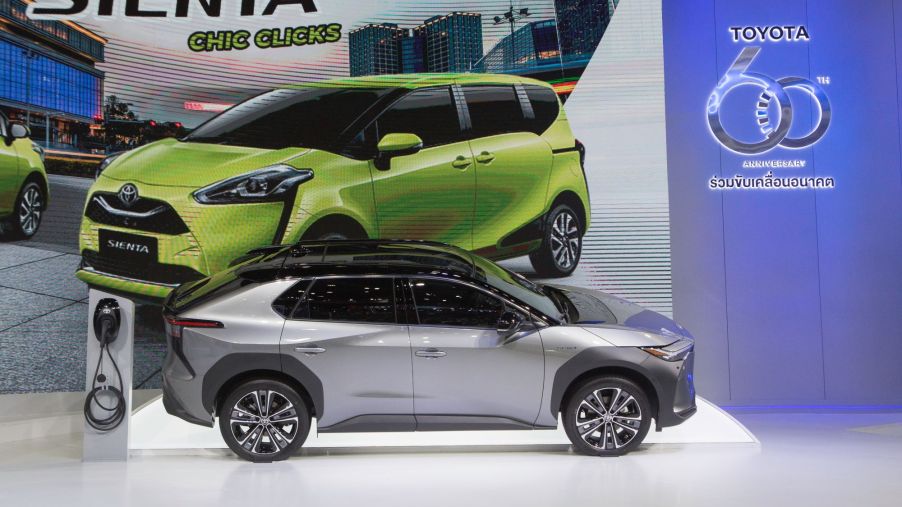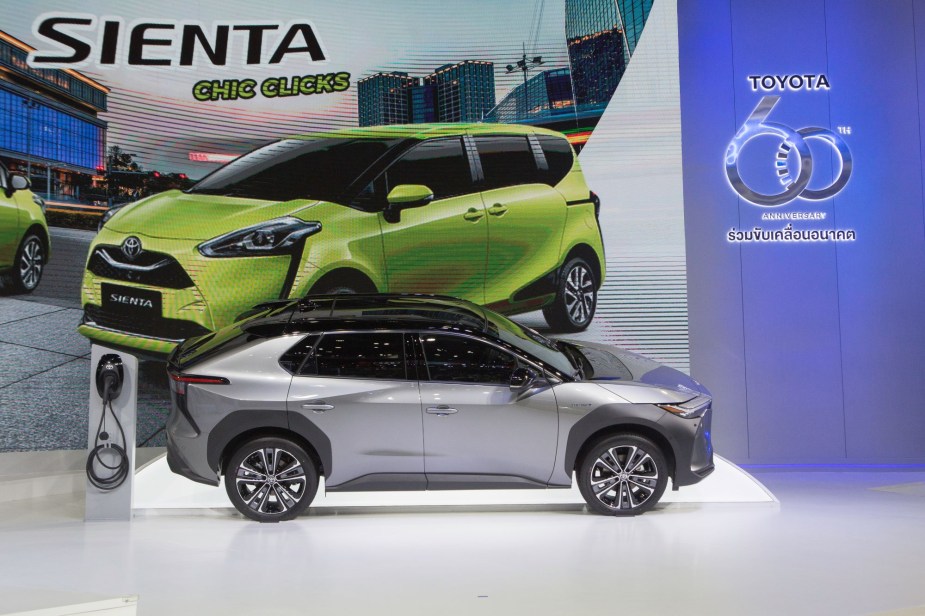
4 Reasons to Buy a 2023 Toyota bZ4X, Not a Volkswagen ID.4
The EV market is booming, and some manufacturers are struggling with consumer demand. For example, Ford has stopped taking orders for the 2022 Ford F-150 Lightning because they can’t keep up with the demand. The next round of orders is not expected to begin until 2023. The SUV EV market is also experiencing increased consumer demand, though some EVs are more popular than others.
The 2023 Toyota bZ4X is a new electric SUV in a burgeoning EV market, which Toyota has been slow to cater to. So how does it compare to its rivals? Here are four reasons to buy a 2023 Toyota bZ4X over a Volkswagen ID.4.
1. The bZ4X is lighter than the ID.4
EVs are notoriously heavy vehicles. Electric cars are heavier than traditional gas-powered vehicles because of the additional batteries, reinforced framework and suspension, and metal armor around the battery to protect it. Heavier vehicles don’t handle as well, and the extra weight can affect the range you get from a charge.
Consumer Reports state that the bZ4X weighs 4,465 lbs while the ID.4 weighs 4,905 lbs. The lighter weight of the bZ4X will help improve mpge and handling.
2. The bZ4X has better fuel economy than the ID.4
According to Car and Driver, the estimated mpge for the bZ4X is 131 mpge in the city and up to 107 mpge on the highway. The ID.4 gets 98 mpge in the city and up to 88 mpge on the highway.
The bZ4X comes with a 63.4-kWh battery pack in the single-motor version and a 65.5-kWh pack in the dual-motor model. The ID.4 comes with an 82-kilowatt-hour battery in the AWD model. The larger battery comes at the cost of added weight, which affects the overall mpge.
3. The bZ4X has more payload capacity compared to the ID.4
Although the ID.4 has more cargo space, the bZ4X has more payload capacity. The payload capacity for the bZ4X is 1,169 lbs, and the ID.4 is 950 lbs. The cargo space for the ID.4 is 30.3 cubic feet, while the bZ4X has only 27.7 cu-ft.
While having more cargo space is a plus, it won’t be as useful because the payload capacity is lower.
4. Better ground clearance than the ID.4

EVs have low ground clearance since the battery is located on the bottom of the car. Another reason is that engineers design them with low ground clearance to improve their aerodynamic qualities, making them more efficient. However, problems can and will occur when the clearance is too low, increasing the chance of bottoming out and damaging the expensive battery underneath the vehicle.
The ground clearance for the bZ4X is 8.1 inches, and the clearance on the ID.4 is a mere 6.1 inches. Less ground clearance can mean more maintenance expenses over the life of the vehicle.
Although Toyota has come to the game a bit late with the introduction of the bZ4X, it is a strong contender in the SUV EV world. Currently, the only EV being mass-produced for Toyota, the bZ4X is expected to have a starting price of around $42,000 MSRP in the U.S., and customers may be eligible for the $7,500 federal EV tax credit as well.


